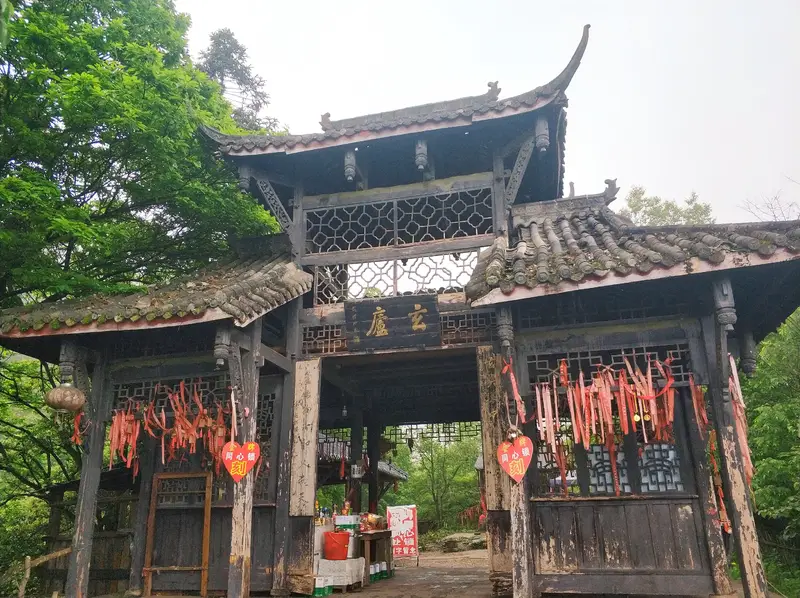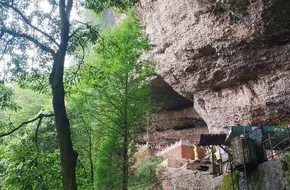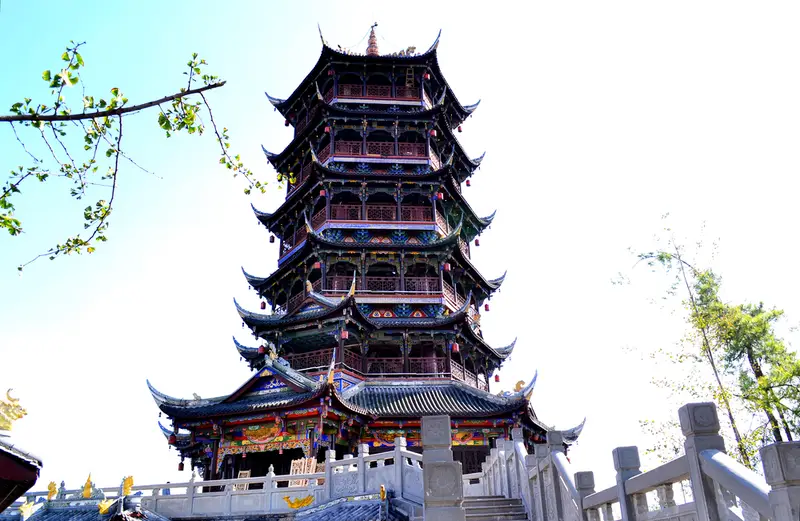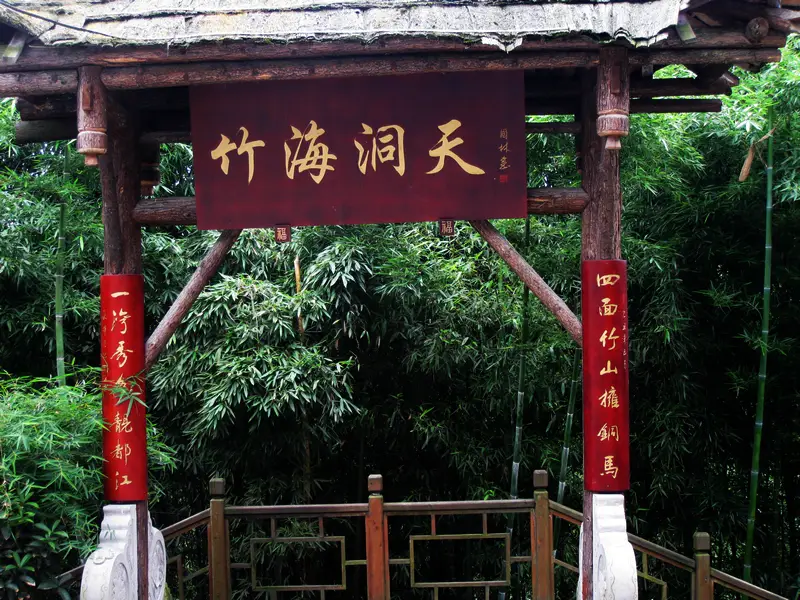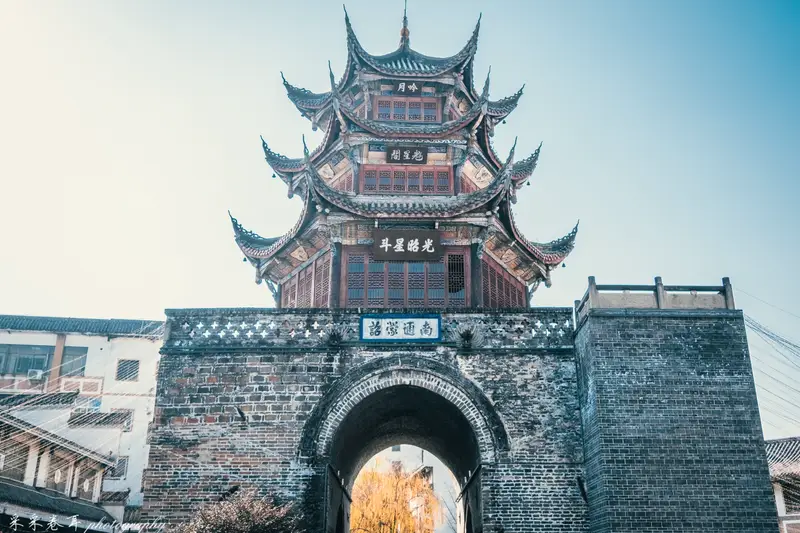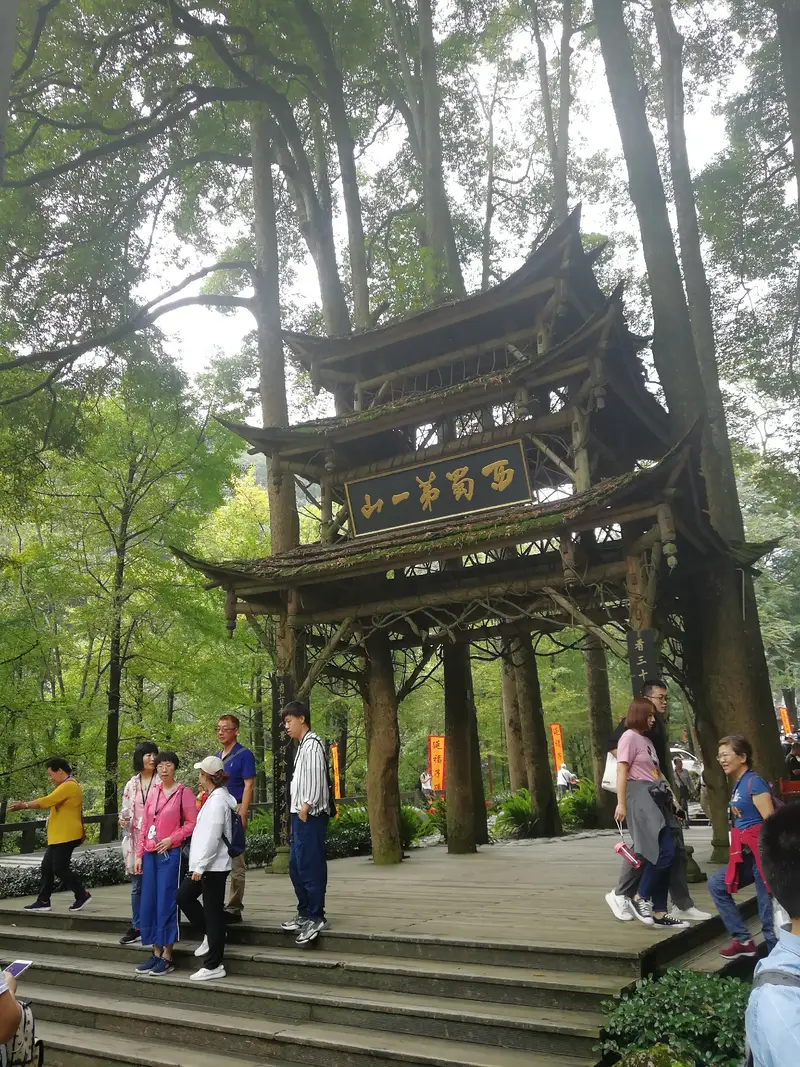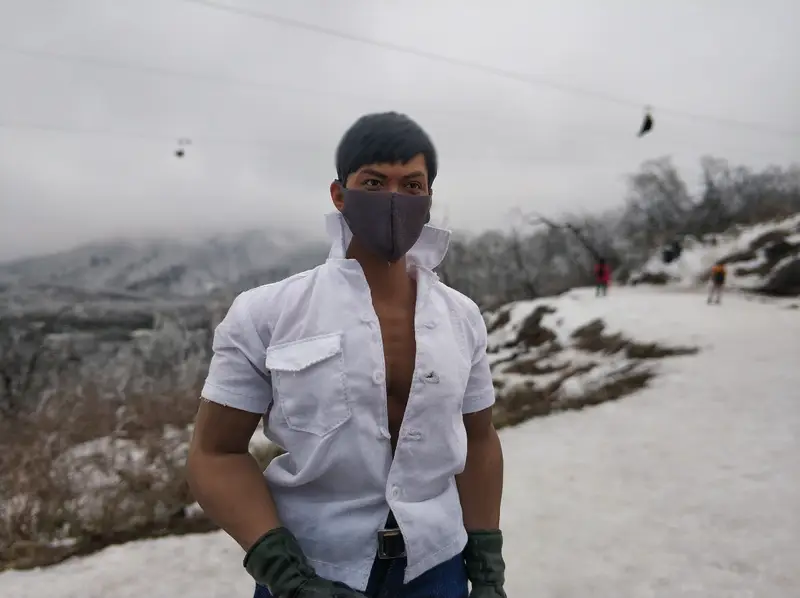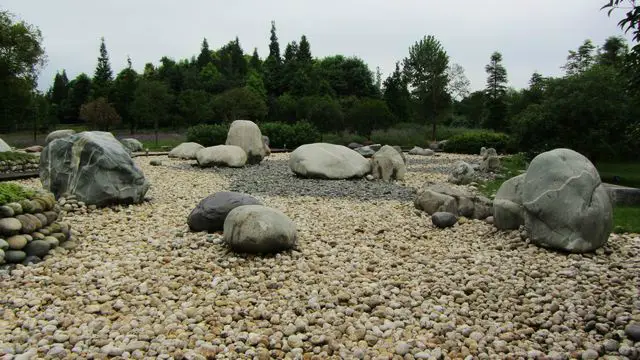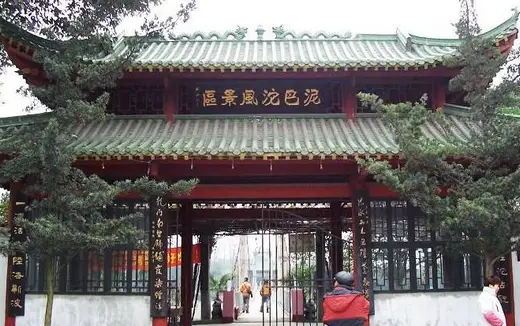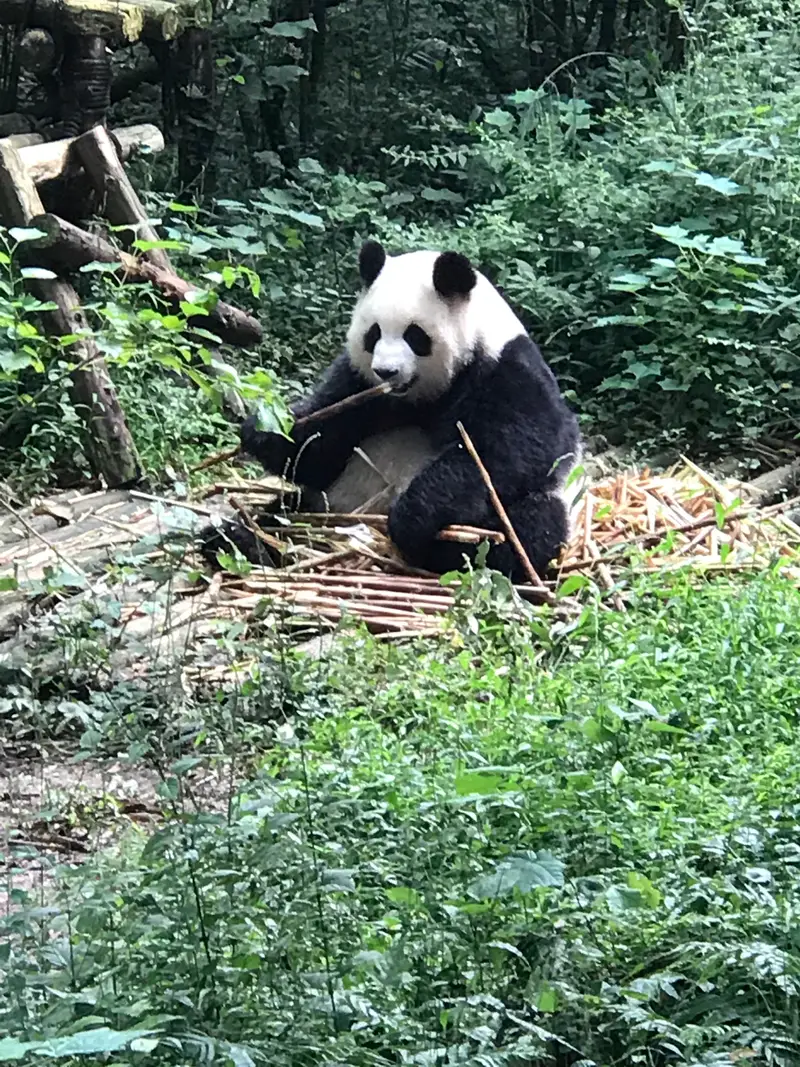Location & How to Get There
Floating Cloud Pavilion sits in the heart of Qingcheng Mountain’s “back mountain” area, about 80 kilometers west of Chengdu. The address is straightforward: No. 66 Yidao Street, Dujiangyan City, Sichuan Province. To reach it, you’ll first arrive at Qingcheng Shan’s main entrance, then take a scenic bus or cable car to the back mountain section—a journey that feels like stepping into a traditional Chinese painting.
For travelers without a car, taking a high-speed train to Dujiangyan Station is easiest. From there, a 30-minute taxi ride delivers you to the mountain’s gateway. If you’re up for adventure, hiking the winding trails from the front mountain to the back mountain takes about 3–4 hours but rewards you with lush forests and stream-side views along the way.
Natural Beauty: A Mountain Escape
The magic of Floating Cloud Pavilion lies in its name—literally. Perched on a cliff, this wooden pavilion offers panoramic views of mist-covered peaks that seem to float like clouds. In the early morning, the area transforms into a sea of fog, with wisps of vapor curling around ancient pine trees. On clear days, you can spot distant mountains through the “frame” of the pavilion’s wooden beams, a scene straight out of classic Chinese poetry.
Beyond the pavilion, the back mountain’s trails meander through dense forests, crossing crystal-clear streams and waterfalls. One highlight is the Golden Lily Pond, a serene lake surrounded by moss-covered rocks. Keep an eye out for wild monkeys—they’re playful but respectful of visitors (just don’t tease them!).
Cultural Roots: Taoism & History
Qingcheng Mountain has been a sacred Taoist site for over 2,000 years, and Floating Cloud Pavilion is no exception. Legend says it was built during the Ming Dynasty as a place for monks to meditate while gazing at the clouds. Today, you’ll find Taoist symbols carved into stones near the pavilion, and local guides often share stories about how emperors once visited here to seek wisdom.
Even if you’re not into history, the pavilion’s design speaks volumes. Its roof curves upward like a bird’s wings, blending seamlessly with the mountain’s slopes. Local artisans repainted it a few years back, but they kept the old-world charm intact—think hand-carved dragon motifs and weathered wooden pillars.
Practical Tips: What to Expect
The trail to Floating Cloud Pavilion is mostly stone steps, so wear comfy shoes! The path is well-maintained, with railings and resting spots. Midway, you’ll find small tea houses where you can sip locally grown Qingcheng tea (try the jasmine-scented white tea) while listening to the sound of a nearby waterfall.
For food, pack snacks or buy simple mountain specialties like roasted corn or spicy noodles from vendors. If you visit on a weekend, expect crowds, but the pavilion’s location high up means you can always escape the hustle for a quiet moment.
The Ultimate Experience
Reaching Floating Cloud Pavilion feels like unlocking a hidden gem. Whether you’re there at dawn to catch the fog or in the late afternoon for sunset, the pavilion offers a different mood each hour. On my last visit, I sat cross-legged on the pavilion’s floor, watching rain drizzle through the treetops—a moment of pure tranquility.
If you’re short on time, combine a visit with nearby spots like Tianshi Cave (a Taoist cave temple) or the Xiyuan Garden. But honestly? The pavilion alone is worth the trip. Just remember: the best views often require a bit of effort—those stairs aren’t called the “path to paradise” for nothing!


